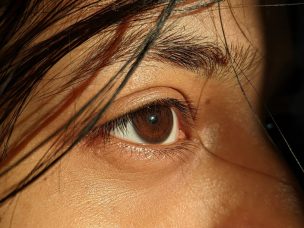Vitiligo
Improving Diversity in Vitiligo Research
Vitiligo research has historically lacked diversity, but studies using a more representative sample are attempting to minimize the gap in understanding. Vitiligo patients of historically marginalized groups carry a greater burden of disease. Research has been conducted on homogenous populations of mostly White individuals. New analysis of a diverse cohort characterized different patterns of diagnosis...
More Accessible Vitiligo Treatment With FDA-Approved Topical Medication
Ruxolitinib, an easy-to-use topical medication for vitiligo has recently been approved by the FDA. The cream can be applied by patients at home, making it a practical option. Vitiligo is a complex autoimmune disorder affecting the skin. Destruction of melanocytes from autoreactive immune activity causes patches of white skin to develop anywhere on the body....
Stem Cell Therapies for Vitiligo Treatment
Vitiligo, an autoimmune disorder resulting in skin depigmentation, can be treated with mesenchymal stem cells that target immune pathways involved with inflammation and skin cell regeneration. Mesenchymal stem cells are being proposed for the treatment of vitiligo. In vitiligo, reactive oxygen species and immune responses cause damage to skin cells. Stem cell therapy can regenerate...
siRNAs for Autoimmune Skin Diseases
siRNAs are used to treat diseases by silencing genes, and in the case of autoimmune skin diseases like vitiligo, blocking the production of the IFN-γ receptor gene may prevent disease-causing immune responses in the skin. Small interfering RNAs (siRNAs) are being used to treat diseases by silencing gene expression. In autoimmune skin diseases such as...
Pathology of the Eye in Vitiligo With Vision Loss
Immune activity in the eye during vision loss was similar to that found in the skin during pigmentation loss in an animal model of vitiligo. Vitiligo often co-occurs with vision loss due to autoimmune reactions in the eye. Only one animal model, the Smyth line of chickens, displays depigmentation and vision loss similar to that...
NB-UVB Combination Therapy for Vitiligo
Compared to monotherapy with NB-UVB, combination treatments are more effective at promoting successful repigmentation and preventing treatment failure in vitiligo patients. Vitiligo is characterized as an autoimmune disorder. Some management guidelines regarding vitiligo suggest the utilization of narrowband ultraviolet B (NB-UVB) combination therapies to promote skin repigmentation. This systematic review and meta-analysis, published in the...
Antiseptic Tulle Gras Dressing With Skin Graft in Vitiligo
Antiseptic tulle gras dressing is an effective approach to applying an ultrathin skin graft template on depigmented areas in recalcitrant vitiligo. This method helps prevent graft displacement and deformity (curling and wrinkling) of its edges. Recalcitrant vitiligo requires rapid repigmentation. Ultrathin split-thickness skin grafting constitutes an effective surgical treatment of recalcitrant vitiligo. In vitiligo, the...
Topical Photochemotherapy and Idiopathic Guttate Hypomelanosis-Like Macules in Vitiligo
The emergence of macular IGH-like lesions is a reversible and rare adverse effect following photochemotherapy in vitiligo patients. Phototherapy is a safe and effective treatment for stable vitiligo in the pediatric population. A rare side effect of phototherapy is the formation of small and well-defined depigmented macules, specifically in skin regions with exposure to ultraviolet...
Immunometabolism in Vitiligo Pathogenesis
Vitiligo is characterized by underlying immunometabolism mechanisms. These serve as the basis for understanding the pathogenic mechanisms and the development of novel therapeutic approaches. Vitiligo is an autoimmune depigmenting skin disorder associated with selective melanocyte loss. The pathogenesis of vitiligo comprises biological, environmental, autoimmune, and genetic factors; however, complete molecular mechanisms underlying the development of...
More Medical News














